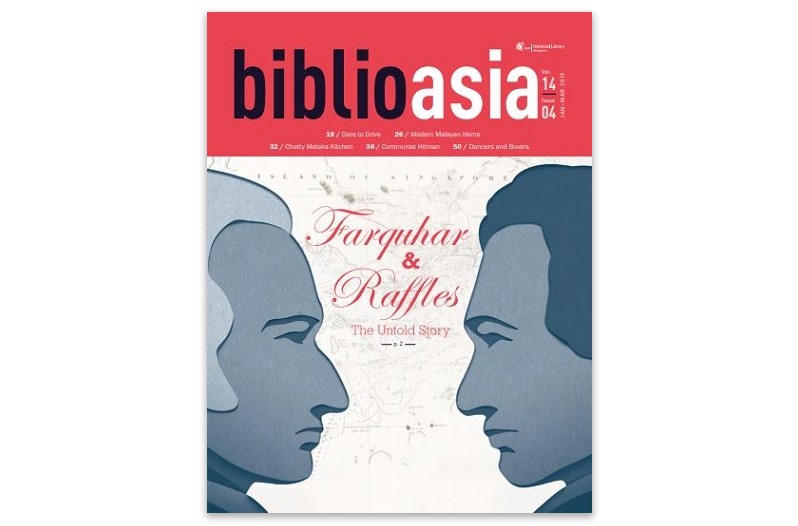Director’s Note (Jan-Mar 2019)
Welcome to the first issue of BiblioAsia for 2019. This year we mark a major turning point in Singapore’s history, the 200th anniversary of the founding of a British trading post on the island – a date generally accepted as the beginnings of modern Singapore.
It is common knowledge that Stamford Raffles and his deputy William Farquhar landed on Singapore on 28 January 1819 and later negotiated with the Temenggong to set up a settlement on the island. Most history books highlight Raffles’ role in the subsequent development of Singapore into a flourishing port and gloss over Farquhar’s contributions. Nadia Wright attempts to set the record straight in this issue’s cover story.
Even so, Singapore’s history did not begin with Raffles’ arrival in 1819: it goes back some 500 years earlier. Tan Tai Yong provides a brief history of Singapore since the 14th century when Temasek – as the island was known then – was already a thriving regional maritime hub.
In April 1907, two gutsy women, Mrs G.M. Dare and her friend Miss Hardman, set out on a road trip across the Malay Peninsula in a two-seater automobile. Their adventures – from Penang to Singapore – were published in The Straits Times over three days in June 1907. An abridged version of the trip is featured in this issue. In another essay about intrepid women, Chantal Sajan remembers her grandaunt, a no-nonsense Chetty Melaka matriarch who perfected the skill of pegang tangan (“touch of hand”) in her cooking.
In the early 20th century, access to gas, electricity and running water led to a proliferation of modern home appliances that revolutionised housework for busy wives and mothers. Advertisements featuring such gadgets were targeted mainly at the fairer sex, as Georgina Wong tells us.
Iron and steel bridges were similarly hailed as marvels of technology when they were first erected in Singapore. Lim Tin Seng traces the origins of nine iconic bridges that have become landmarks along the Singapore River.
Singapore’s diminutive size belies its rich history. Between 1920 and 1940, the city was a favoured pit stop for foreign entertainers and boxers who appeared at the Victoria Theatre and Happy World, as Paul French discovered. Ronnie Tan and Goh Yu Mei reveal an unsavoury side to Singapore history in their account of a communist cadre who was responsible for a string of grisly murders here in the 1950s.
We also feature the National Library’s collections in articles on the early Malay art scene, the Legal Deposit Collection and a recent donation of rare materials by the Singapore Chin Kang Huay Kuan.
On behalf of the National Library, we would like to wish everyone a fabulous start to 2019!
Ms Tan Huism
Director
National Library


